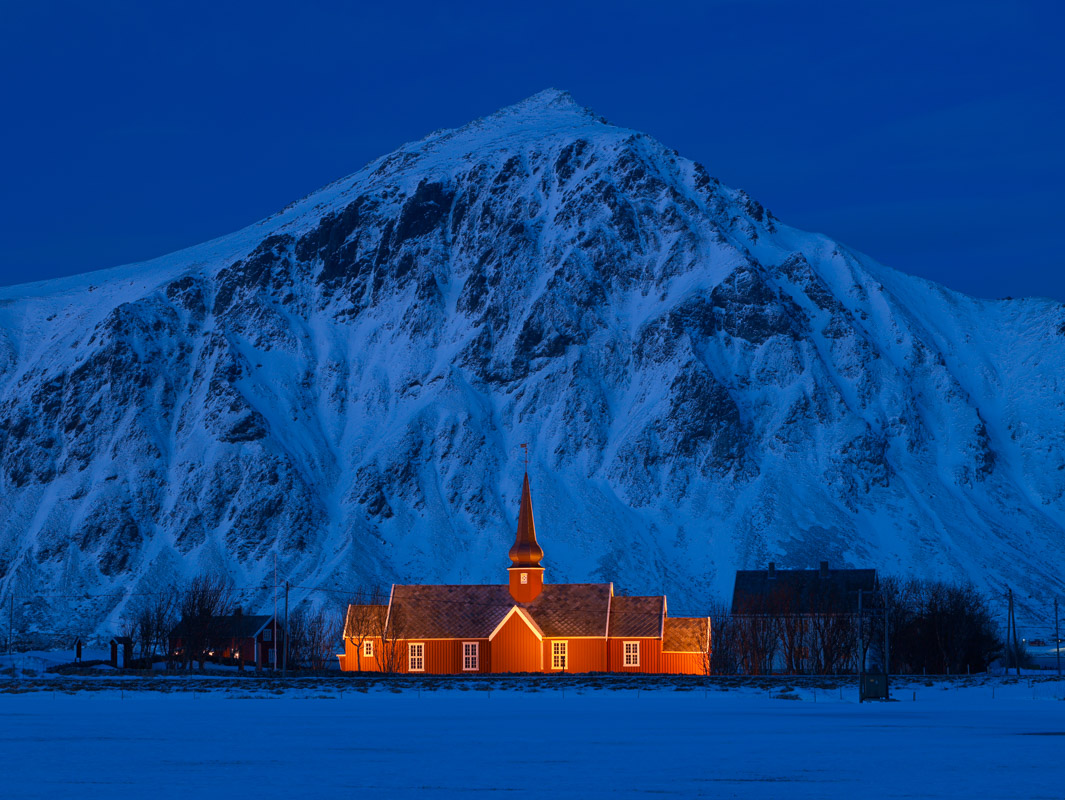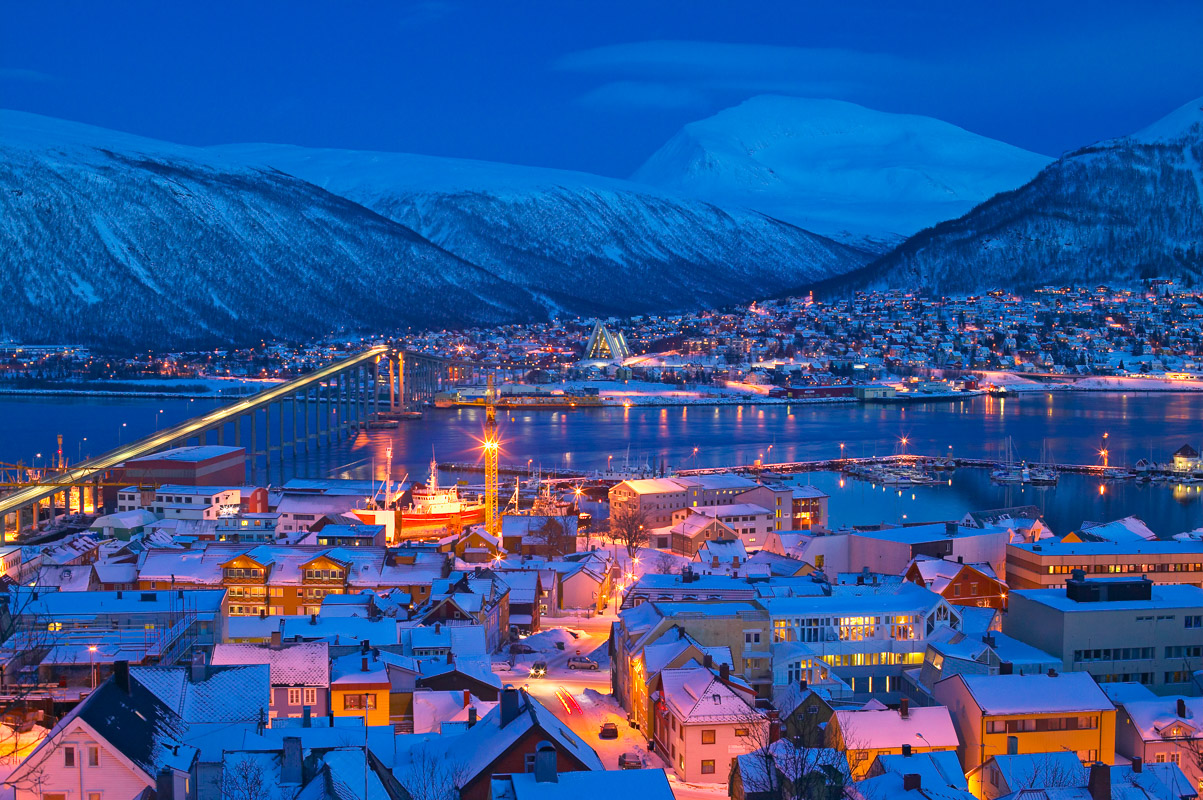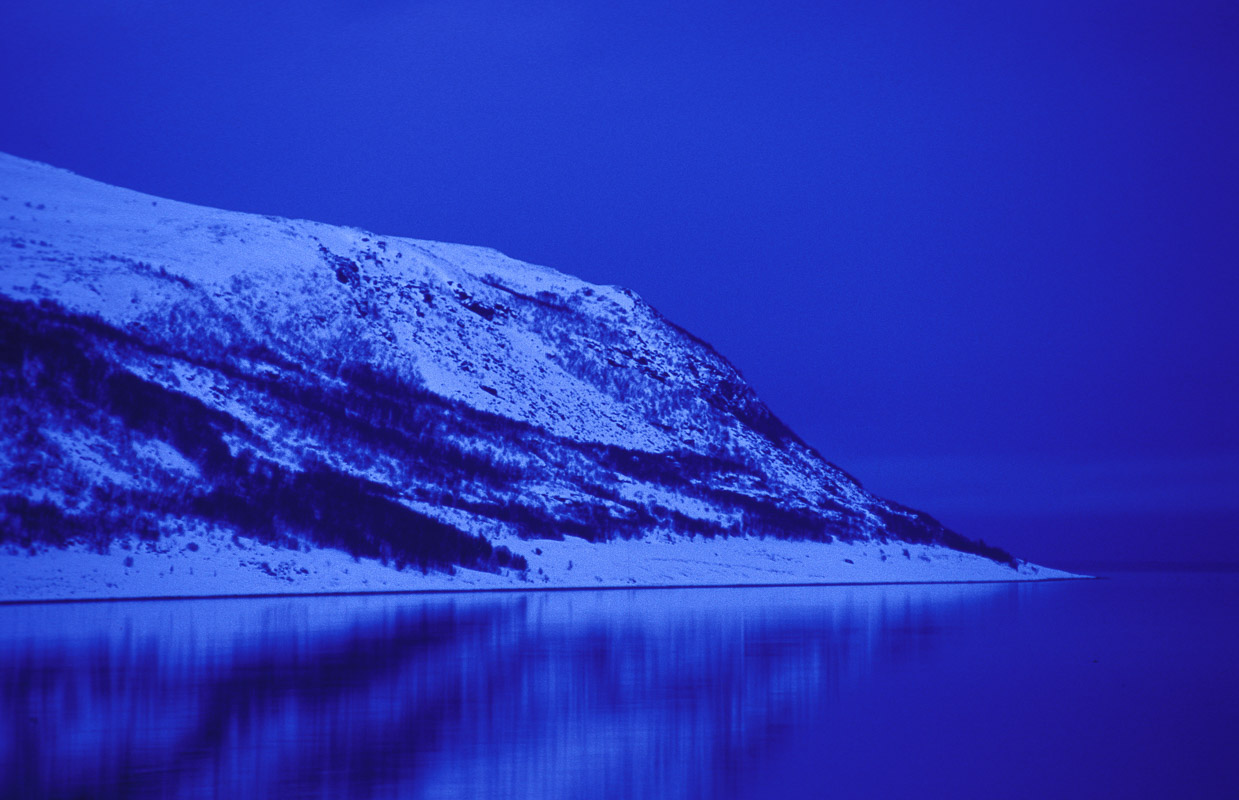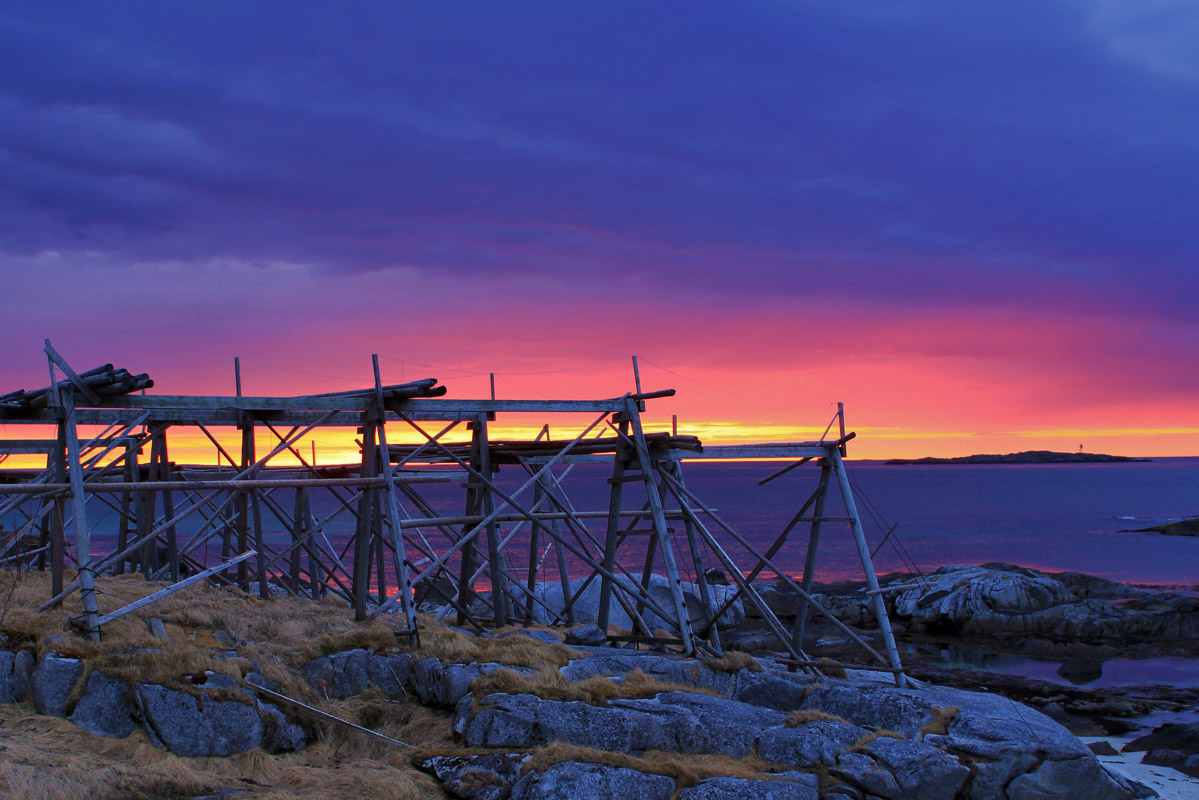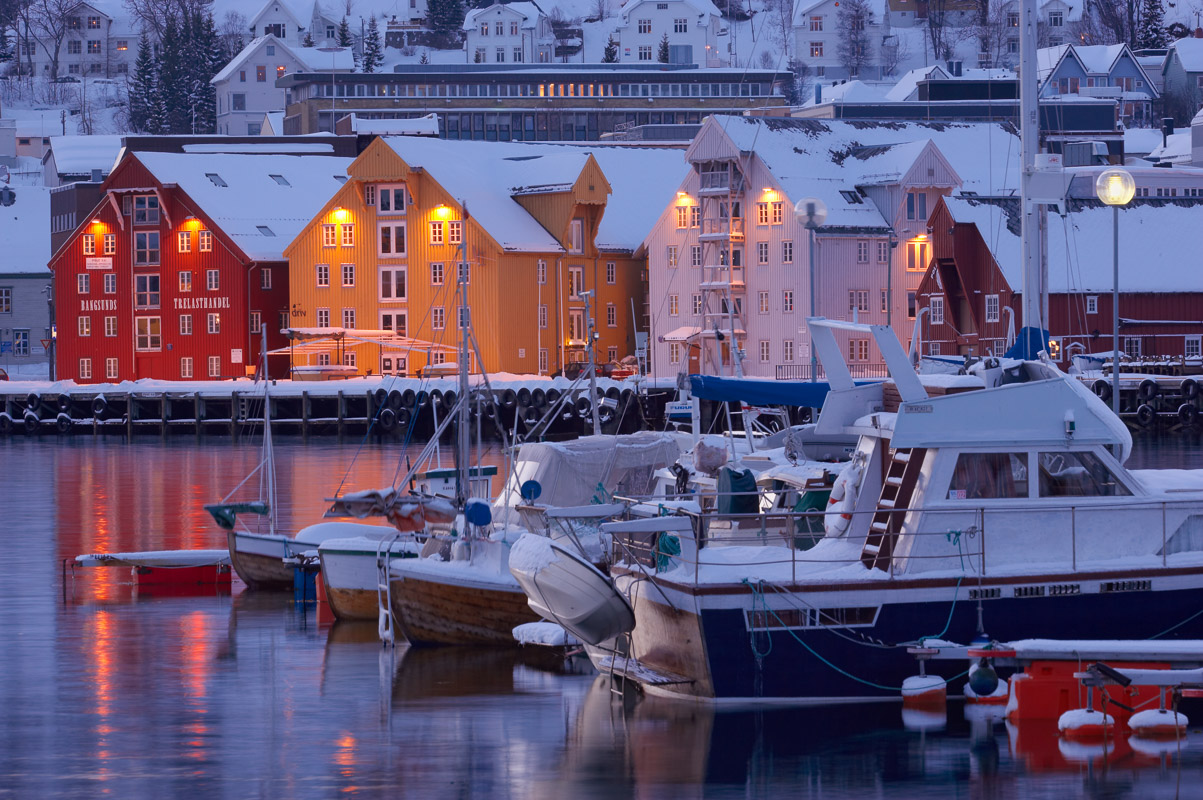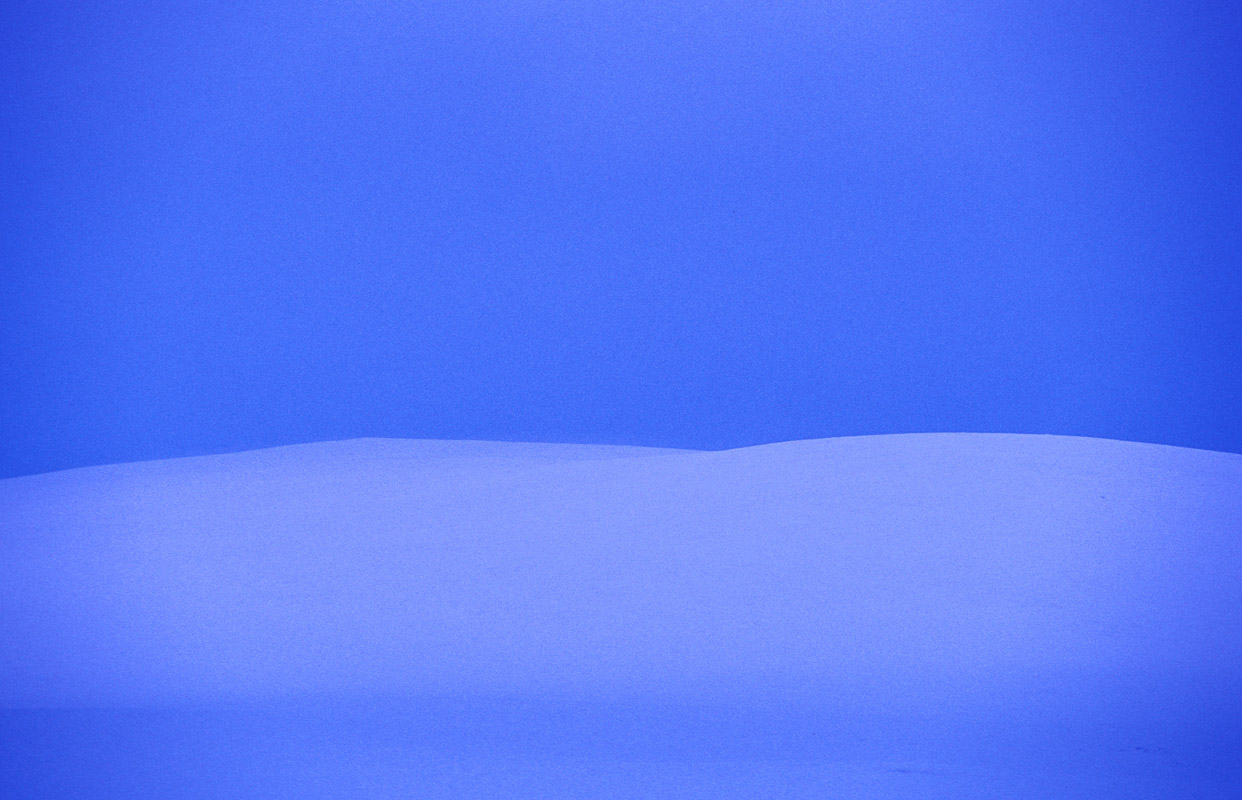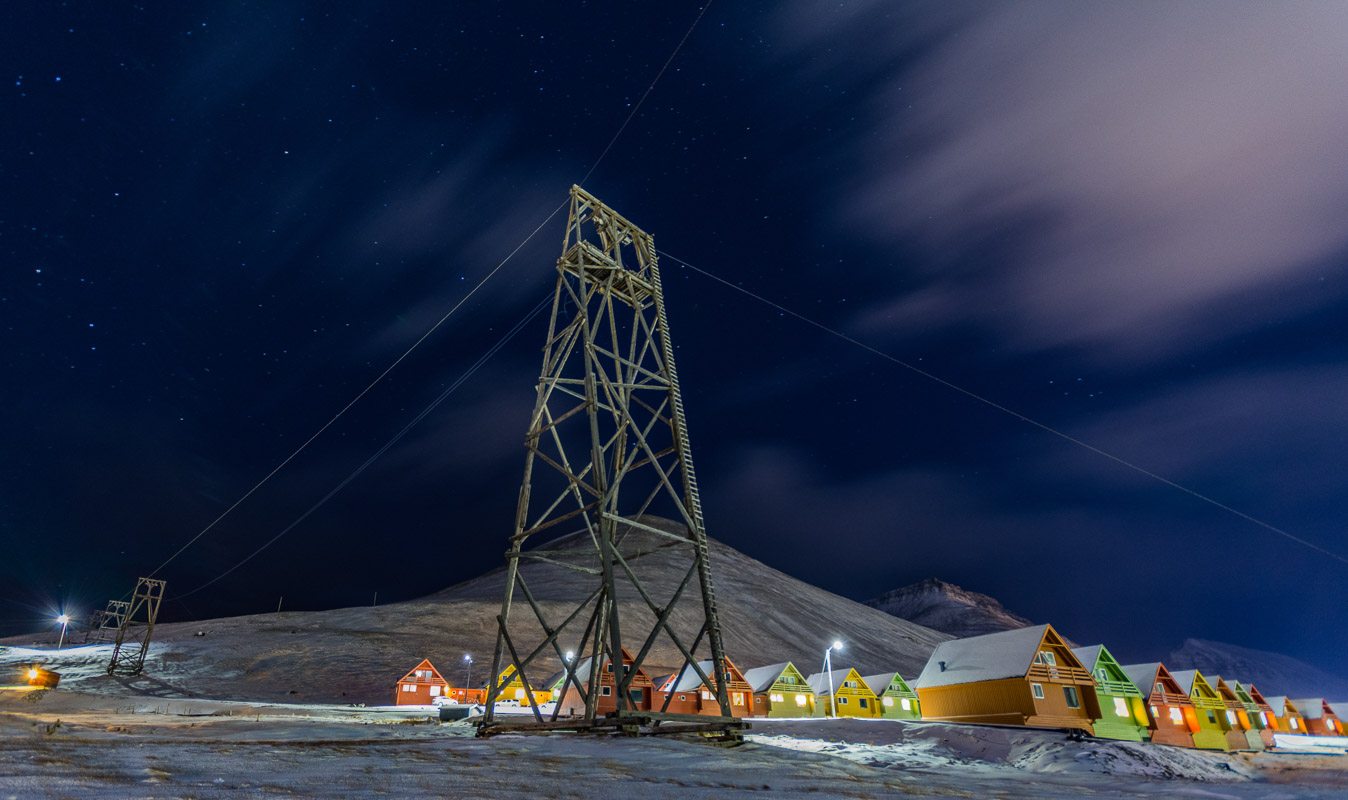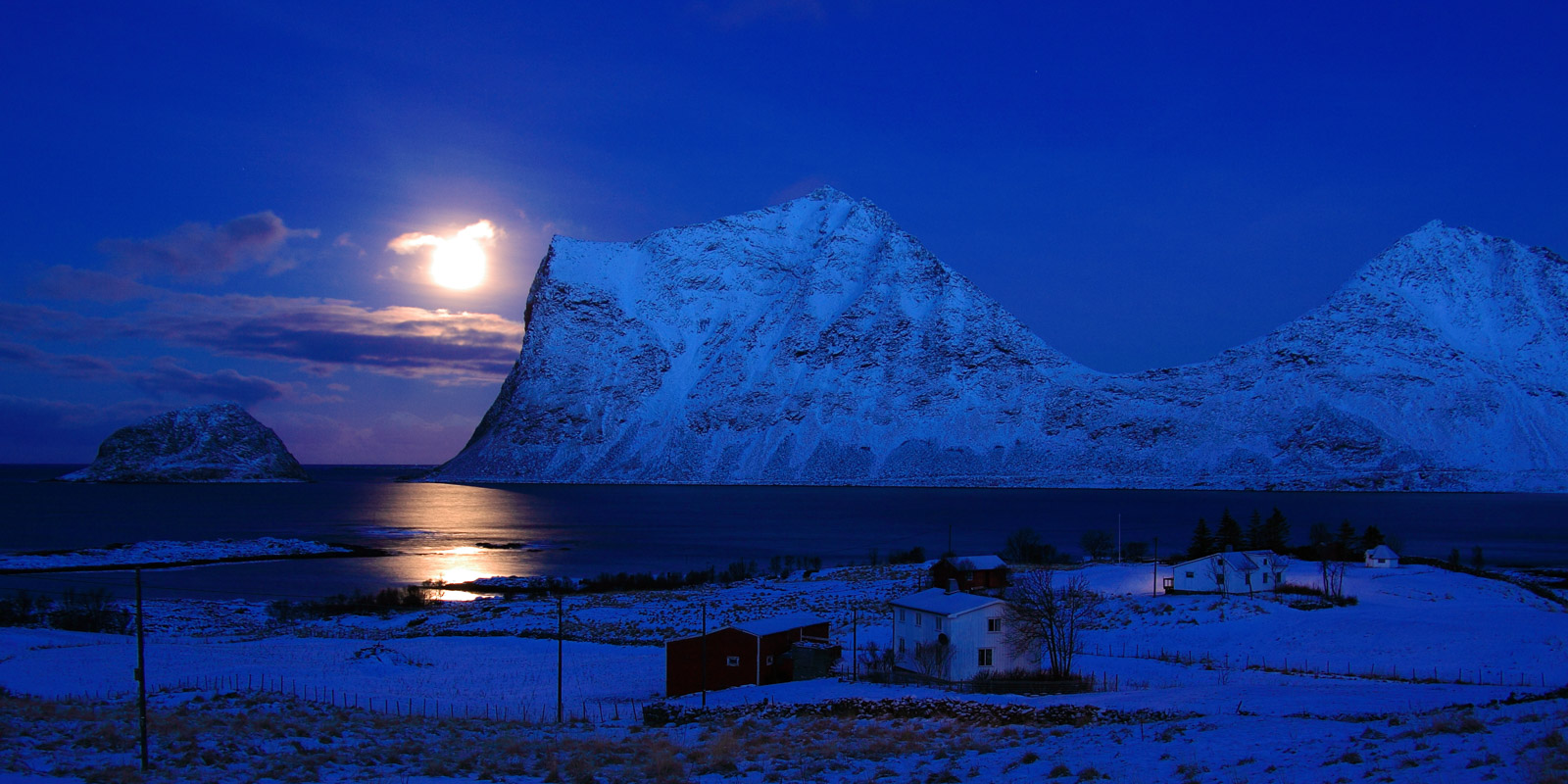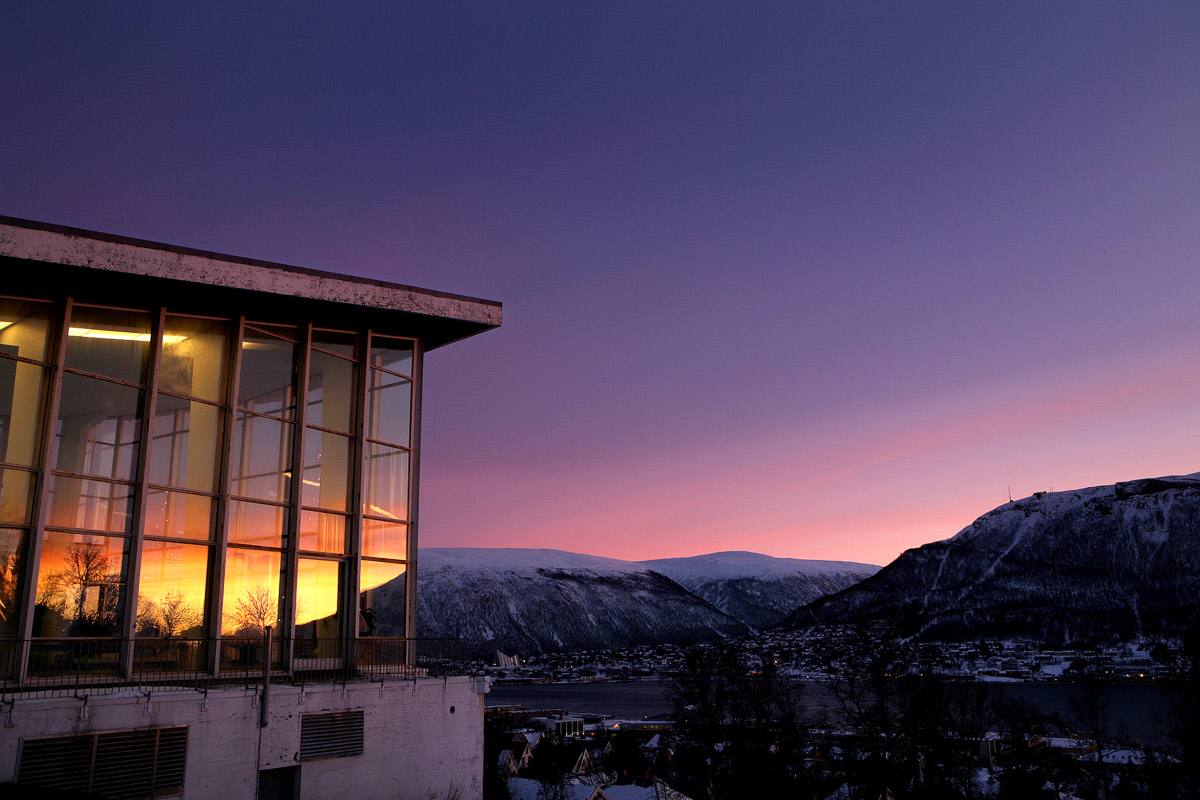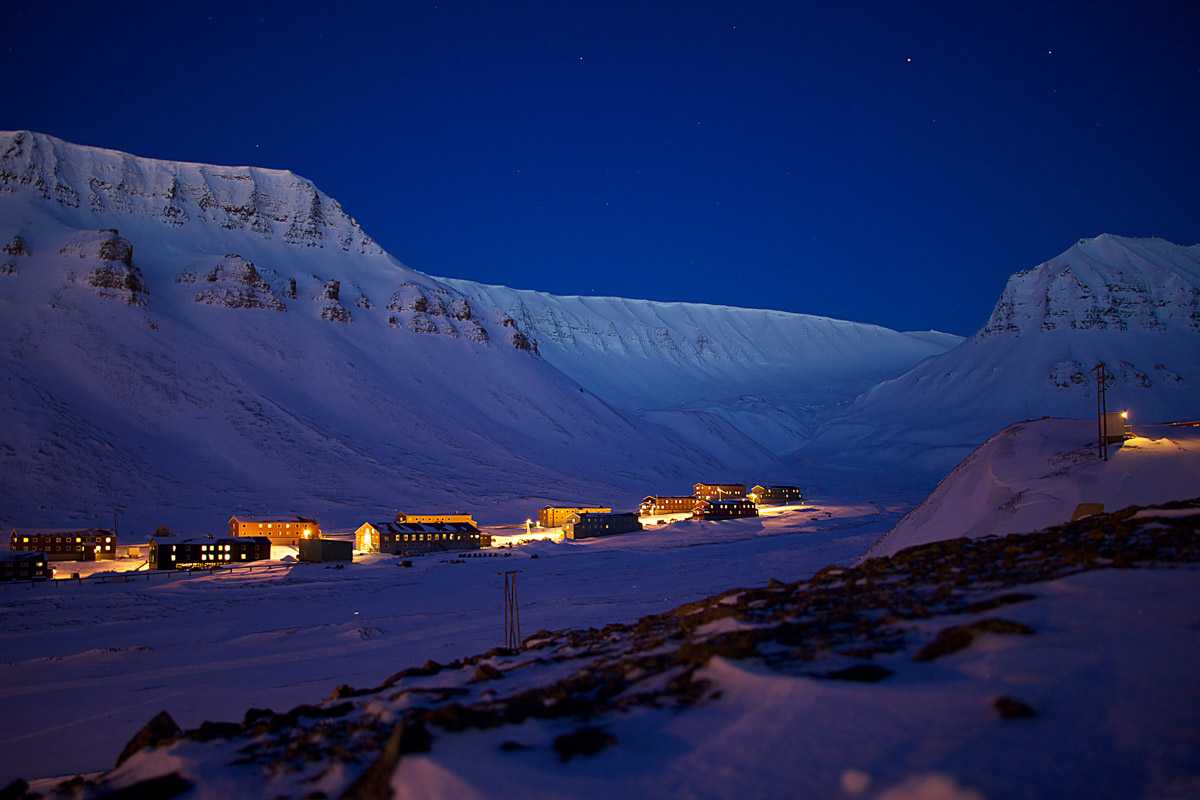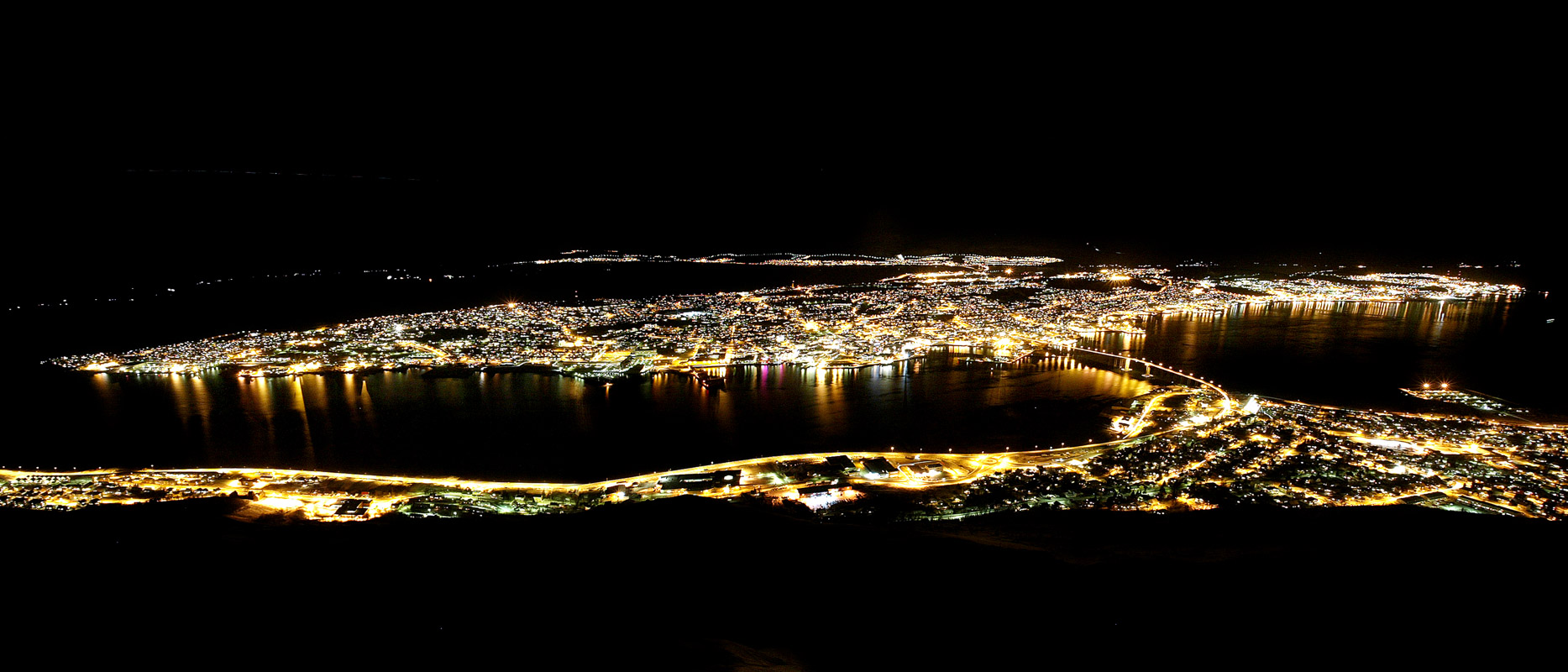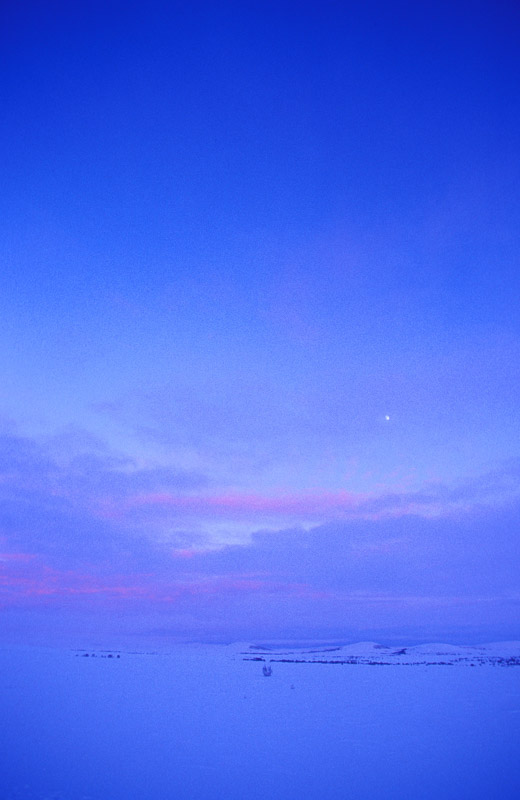Do you think you could take not seeing the sun for six to seven weeks? Or even four months? This is real life for us in Northern Norway. But if you come, you’ll experience rich culture and beautiful light.
Imagine nights that last 20 hours, and weeks without seeing the sun. That is real life in large areas of Northern Norway. And just imagine, many people who live in the north think that this is the finest time of the year, with fantastic skyscapes and magical lights. A visit during the dark months is a warming experience!
We are hidden on the back side of the Planet during winter
Just like the midnight sun, the Polar Night is attributable to the inclination of the planet. In the same way that globes are often mounted at an angle on their stands, Earth itself is angled to one side. Winter comes around when the northern hemisphere is farthest from the sun, and the Polar regions in the north are that part of the planet that are angled farthest away. In other words, the rest of the planet blocks off the sun! Wikipedia has a more detailed description.
The Polar Night can last days to months depending on your location
On the North Cape, the sun remains under the horizon for more than two months, while in Tromsø the phenomenon lasts for six weeks or so. In Lofoten, the dark period is short, just under four weeks. From Bodø and farther south, the sun does actually appear even in the deepest mid-winter, lighting up the winter landscape briefly around midday. At the other end of the scale is Svalbard, where the sun disappears completely for almost four months!
It is never completely dark all the time
Even though the sun remains below the horizon, Northern Norway is not blacked out completely. On clear days, we can see beautiful sunset colours in the south while the sky to the north is a deep midnight blue. On Svalbard, however, it is fully dark even at midday for several weeks around Christmas.
The “blue hour” is the most iconic period of the day
Around 1–2 o’clock in the afternoon, the residual light is reflected off the blue sea and the white snow, and the landscape is bathed in a glassy deep blue colour. This wonderful blue stays with us as long as the snow covers the ground and there is twilight. However, the blue hour occurs a few minutes later every day during winter, as the sun gains strenght.
Life goes on as normal in Norther Norway
The people of Northern Norway have lived with the dark months for the past 10,000 years or so. They go to work and to school as usual, and the range of leisure activities available in the evenings is broad and varied. Cafés, restaurants and nightspots fill up night after night with talkative, good-humoured people, and many entertaining festivals are held during this period. Outdoor activities are far from impossible. There are illuminated ski runs in even small resorts in Northern Norway, and some operators organise dog-sledding and scooter trips where participants wear head-lights.
We are a little more tired, but are otherwise in good spirits
Most people in Northern Norway feel that they need a little more sleep, and everyone tends to go to bed a little earlier. Otherwise, Northerners experience few problems in the dark months, and there is no noticeable increase in depression and alcohol abuse. In fact, we handle this period much better than people from southern climes would think – perhaps because we know that it doesn’t last all that long.
There is no noticeable increase in depression or alcohol abuse during the polar night
In the Polar Night you can meet us in our winter home
To visit Northern Norway during the dark months is to meet us Northerners at home. It is a great time for cultural events, festivals, good food, Christmas shopping and outdoor activities. Bring your sweetheart for a romantic long weekend in the far north – it is the perfect setting for spending quality time together by the light of flickering candles. The spawning cod swim in close to the shore, and your taste buds rejoice. Snow scooter trips, dog-sledding and sleigh rides are organised in many places in Northern Norway and on Svalbard, and this is a great time of year to see the Northern Lights.
Going south for the Polar Night?
In Bodø the sun is over the horizon for 50 minutes at the winter solstice. Even though the city lies north of the Arctic Circle, the sun appears due to an optical illusion in the atmosphere. Despite this, you don’t see the sun, it is hiding behind the back of Børvasstindan. In Strøkene south from Bodø you can see the sun all year long, but stays low on the horizon, creating a drawn out sunset throughout midday.
Total Polar Night consumes Svalbard
In Northern Norway, there is normally at least some light even at the winter solstice. On Svalbard, however, there is no light at all. In Longyearbyen there is no daylight from the 11. November to the 30. January. when the sun lies more than 6 degrees below the horizon, Polar Night is declared.
How long is the Polar Night across Northern Norway
The polar night is between 25th November and 17th of January in Alta.
The polar night in Andenes lasts from the 29th of November until the 13th of January.
Many places have mountains to the south. Bodø, therefore, doesn’t technically have Polar Night, despite not seeing direct sunlight. In Tromsø the sun returns over the horizon on the 15th of January, but the celebrated Sun Day is not until the 21. January, when the sun is seen in the city center over the mountains.
The polar night in Berlevåg lasts from 21st of November until the 21st of January.
The polar night in Bardufoss is between the 30th of November and 12th of January.
The polar night in Hammerfest lasts from the 22nd of November until the 20th of January
The polar night in Harstad lasts from the 2nd of December until the 10th of January.
The polar night at the North Cape lasts from the 20th of November until the 22nd of January.
The North Pole experiences the longest polar night in the world, and it lasts from the 25th of September until the 18th of March.
The polar night in Longyearbyen lasts from the 26th of October until the 16th of February
Between 7th of December and 5th of January
The polar night in Tromsø is between the 27th of November and the 15th of January.
In Vardø, the polar night lasts from the 23rd of November until the 19th of January.
